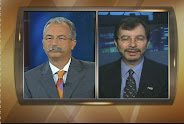 No, this won’t be a Limbaugh/Beck/Cato Institute inspired rant against the evils of big government. Rather, today’s commentary focuses on the FUD factor - fear, uncertainty, and doubt – that many small businesses harbor toward where the US economy (and the regulatory side of our government) is headed.
No, this won’t be a Limbaugh/Beck/Cato Institute inspired rant against the evils of big government. Rather, today’s commentary focuses on the FUD factor - fear, uncertainty, and doubt – that many small businesses harbor toward where the US economy (and the regulatory side of our government) is headed.
Investors know the adage that the markets abhor uncertainty. In the current economic climate, what should be appreciated equally as much is how uncertainty is playing into a diminished US economic recovery: global multinational big earnings notwithstanding.
When I started focusing on the potential of a bifurcated earnings season several months ago, I noted the risks to the US economy and the need for a sustainable, organic economic recovery. As the primary engine of jobs growth, small businesses are key to a sustainable economic recovery – a point highlighted in my September 22nd David Malpass podcast interview and recently emphasized again in a Bloomberg Surveillance radio interview with the National Federation of Independent Businesses (NFIB) chairman, Bill Dunkelberg.
As Mr. Dunkelberg noted in the November 20th Bloomberg radio interview, normally in an economic recovery one of the first groups out of the box to embrace the prospective better times ahead are small, independent businesses. Optimistic by nature, this group wants to find ways to make payroll and grow their businesses. However, as Mr. Dunkelberg also noted, such is not the case in the current recovery as the normal optimism is absent. In its place is a still very high degree of FUD - much of it anchored in concerns over regulatory and legislative change.
There are two implications to this small business tale of woe – one economic, the other market.
As the recent 3Q09 earnings results demonstrate, the global growth story along with the weak US dollar is benefiting the large, multinational while masking what could be the start of a hollowing out of the US economy. The longer term economic implications are obvious – weakened domestic growth impacting the key jobs engine of the economy, small businesses, limits hiring and wage increases, which further inhibits the US consumer’s spending habits and feeds into the new frugality, which then diminishes the US economy’s economic vigor. When you add to this mix the angst over change noted above, the cocktail you end up with is not a very pleasant tasting concoction.
As for the market dynamic to all this, it is a fruitful exercise to compare the price action of the large and mega cap sector of the market to the mid, small, and micro groups for signs of price performance divergences. If a divergence begins to develop (a point I first noted on September 29th), then a market recognition of the real economy risks noted above will very likely set the stage for a more meaningful market pullback, most likely in the first quarter of next year.
As the above chart* shows, such divergences have begun to occur - the recent highs by the large and mega cap sectors (SPX and OEF) are thus far not being confirmed by the Smids and micro cap groups (MDY, IJR, and IWC). Moreover, the late October/early November pullback made lower lows in the Smids and micro caps but not in the large and mega cap areas. Both market developments are facts that have not occurred since the bull rally got started in early March.
Crying Uncle
Maybe all will be well as the rising tide of big business eventually lifts the smaller boats. Then again, a scenario similar to Japan in the 1990s make occur in which big business exploits their competitive advantage at the expense of their smaller, more domestic brethren via pricing pressures to gain market share. And we all know how that story turned out.
*click image to enlarge
 My interview with the Principal and Portfolio Manager at "Concise Capital Management" introduces listeners to a unique fundamental analysis approach to high yield bonds. By focusing on short maturities, Mr. Krasner and his associates minimize the interest rate risk dynamic while capturing high income streams. Tom also provides his perspective on the current default rate cycle in the high yield bond area.
My interview with the Principal and Portfolio Manager at "Concise Capital Management" introduces listeners to a unique fundamental analysis approach to high yield bonds. By focusing on short maturities, Mr. Krasner and his associates minimize the interest rate risk dynamic while capturing high income streams. Tom also provides his perspective on the current default rate cycle in the high yield bond area. 


















































